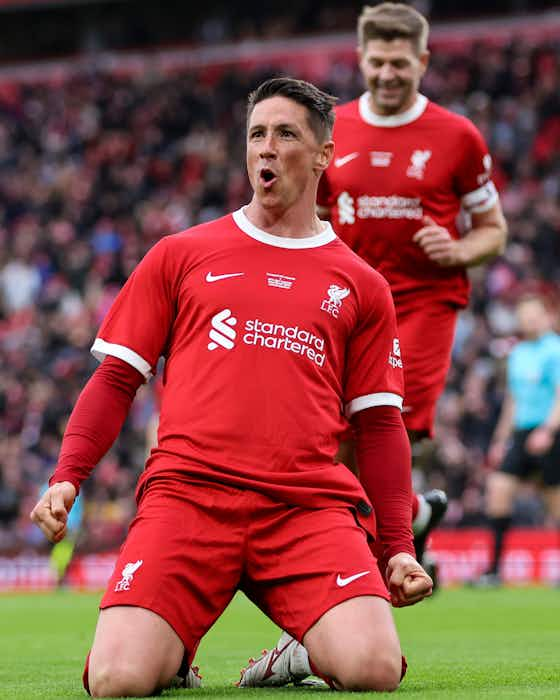Anfield Index
·19 May 2025
How Liverpool Rebuilt After Iconic Exits

In partnership with
Yahoo sportsAnfield Index
·19 May 2025

Liverpool Football Club has a rich history of legendary players donning the red shirt, only for the baton to be passed to fresh faces as the sands of time shift. The latest to bid farewell is Trent Alexander-Arnold, who is set to complete a sensational free transfer to Real Madrid. After a decorated spell that includes two Premier League titles and a Champions League crown, the academy graduate will leave big boots to fill.
With Liverpool poised to trigger Jeremie Frimpong’s €40 million (£33.6m) release clause at Bayer Leverkusen, attention now turns to how this new era will be shaped — and whether Frimpong can live up to Alexander-Arnold’s high standard.
This isn’t new territory for Liverpool. The club has a long tradition of replacing icons, sometimes with immediate success, and other times with painful lessons. Here’s a comprehensive look at how the Reds have historically managed transitions, with comparisons and context around each significant replacement.
Jamie Carragher’s retirement in 2013 marked the end of an era. The no-nonsense centre-back made 737 appearances and embodied the club’s values. His exit led to the arrivals of Kolo Toure and Mamadou Sakho.
“Liverpool has to look for someone to replace him,” said Toure. “It is a big honour. To be chosen as Jamie Carragher’s replacement is unbelievable.”
While the pair brought experience and promise, neither truly filled Carragher’s leadership void. Both featured prominently in the 2013/14 season but departed by 2016, with the defensive inconsistency often cited as a reason Liverpool fell short in the title race.
Fernando Torres dazzled the Kop before making a record £50 million move to Chelsea in 2011. Luis Suarez had already been signed from Ajax, but Andy Carroll also arrived for £35 million as a late reaction to Torres’ departure.

Photo: @PremierLeague on X
Suarez flourished, scoring 82 goals in 133 appearances and nearly delivering the league title in 2013/14. Carroll, however, struggled under the weight of expectation and never fit the tactical system, notching just 11 goals in 58 outings.
Similarly, when Luis Suarez himself left for Barcelona in 2014, Liverpool attempted to fill the void with Mario Balotelli, Rickie Lambert and Divock Origi. While Balotelli and Lambert failed to make a significant impact, Origi’s story became one of cult status, particularly after scoring in the 2019 Champions League final.
Xabi Alonso and Javier Mascherano were once the heartbeat of Liverpool’s midfield. Their departures left gaping holes that were never truly patched.
Alonso’s exit to Real Madrid in 2009 prompted the signing of Alberto Aquilani. The Italian, hampered by injuries, failed to meet expectations and made just 28 appearances.
Mascherano’s 2010 switch to Barcelona saw Roy Hodgson turn to Christian Poulsen. Despite their prior connection at Copenhagen, the Dane failed to adapt and was gone after one underwhelming season.
Pepe Reina’s eight-season stint as Liverpool’s no.1 ended with a loan to Napoli in 2013. Simon Mignolet was brought in from Sunderland for £9 million.
The Belgian started brightly but was later phased out following Klopp’s arrival, who brought in Loris Karius and, eventually, Alisson Becker. Mignolet’s inconsistency highlighted the importance of secure hands between the sticks—something Alisson has since restored.

Steven Gerrard’s departure in 2015 led to the signing of James Milner, a move that drew praise from Gerrard himself.
“He’ll bring a vast majority of experience,” Gerrard said. “I think it’s a very safe signing in the fact that he’s won things. He’s a proven winner—I think he’s still hungry. I know he’s a very fit boy, very professional and he won’t let anyone down.”
Milner delivered exactly that, becoming an invaluable leader and winning every major trophy before leaving in 2023. His successor, Ryan Gravenberch, has already impressed under Arne Slot, earning a Young Player of the Season nomination for 2024/25.
Michael Owen’s 2004 exit mirrors Alexander-Arnold’s move in many ways. Djibril Cisse was brought in for £14 million but endured a horrific double leg break early on. He did recover to score in two major cup finals, yet never truly became Owen’s long-term heir.
Liverpool’s track record of replacing icons is a mixed bag — some successors elevate the team, while others falter under the pressure of expectations. As Alexander-Arnold prepares for his Spanish adventure, all eyes are now on Jeremie Frimpong. Will he follow in the footsteps of Suarez and Mac Allister, or join the ranks of Aquilani and Carroll?
What’s certain is that Liverpool’s story of regeneration continues — a club in constant motion, honouring its past while shaping its future.






























































